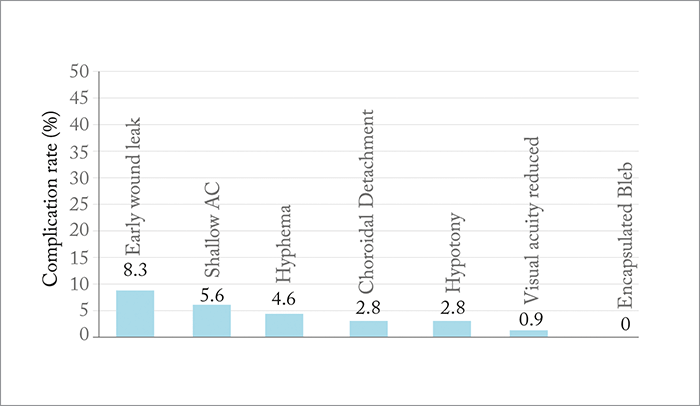
CO2 Laser-Assisted Sclerectomy Surgery (CLASS) is an outpatient procedure that provides significant IOP-lowering efficacy with a safety profile similar to those of manual non-penetrating deep sclerectomy. CLASS is performed through a standard, manually created superficial scleral flap, followed by repeated ablations of the scleral tissue at a depth of approximately 30 µm in a predefined pattern (see Box: The CLASS procedure). This exposes Schlemm’s canal, and facilitates aqueous fluid outflow through the remaining thin trabeculodescemet membrane. Prior to unroofing Schlemm’s canal, the CO2 laser is used to create a reservoir inside the scleral flap window which is intended to reduce the final bleb size and to increase the secondary (subchoroidal) aqueous humor absorption pathway. This means that the bleb created is much less elevated than what trabeculectomy or tube shunt surgery achieves, and helps to mitigate against some of the bleb-related complications associated with trabeculectomy. It’s worth reviewing how CLASS works. It uses a CO2 laser, which is extremely effective at ablating dry tissue. But the laser energy is also highly absorbed by water and aqueous solutions, which in effect creates a self-regulating mechanism: once the aqueous humor starts to percolate from the remaining thin membrane, it absorbs the laser energy and prevents it penetrating to deeper layers – which explains why the procedure is non-penetrating.
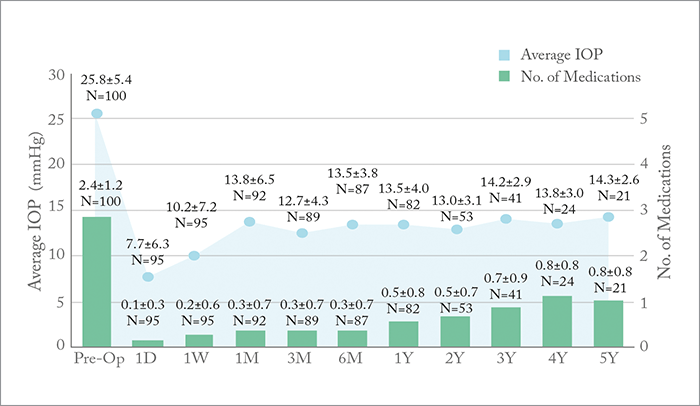
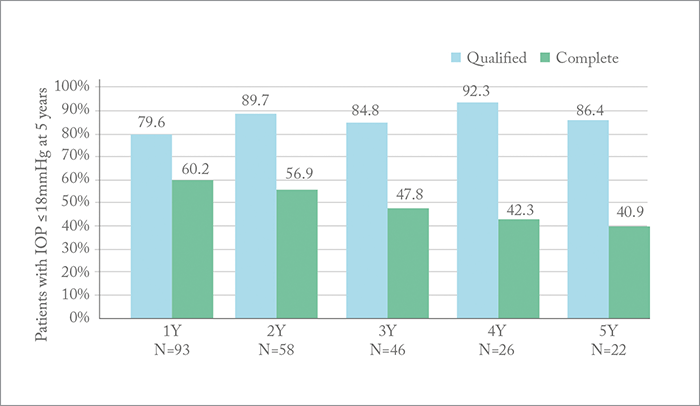
Looking at the long term…
A five-year clinical trial of the long-term effects of CLASS has recently been presented (1). It was a prospective, multicenter trial that involved 111 patients with primary open angle or pseudoexfoliative glaucoma and who had baseline IOPs of over 18 mmHg. Of the 111 patients, 11 were excluded from the efficacy analysis: five because of protocol deviations and six because the operator failed to manually create an adequate scleral flap. At the conclusion of the study, the CLASS procedure was shown to be relatively safe with few complications (Figure 1), and was successful in lowering IOP and reducing the average number of medications in the vast majority of patients (Figures 2 and 3). There were no intraoperative safety issues noted, and postoperatively, complications were mostly mild and transitory with no sequelae. So far, there have not been any cases of endophthalmitis or blebitis. Scarring at the incision site was reported, although not unexpected; because ablation takes place below the limbus, corneal scarring near the limbus is also possible. Compared with what might be expected after the standard filtration procedures, bleb-related complications (i.e., vascular blebs and late leakage) were virtually nonexistent, and in general, blebs were diffuse with posterior location.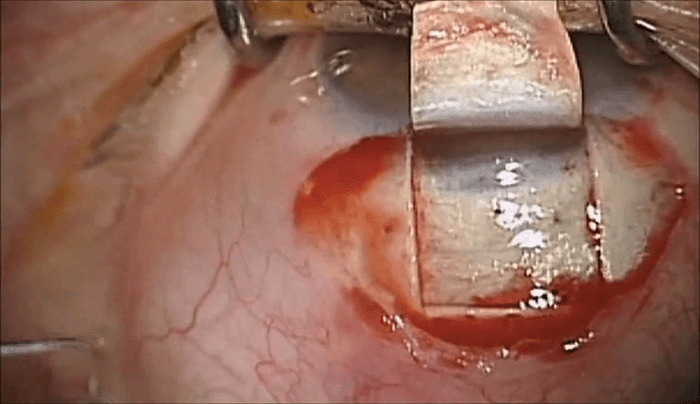
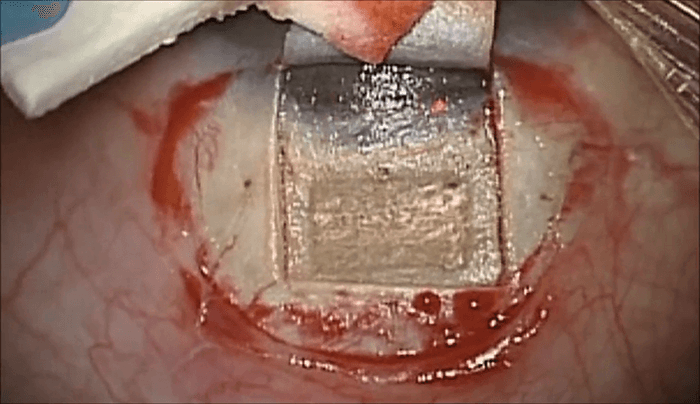
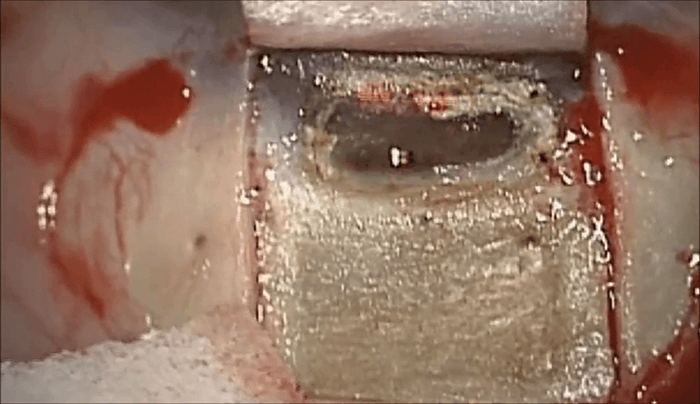
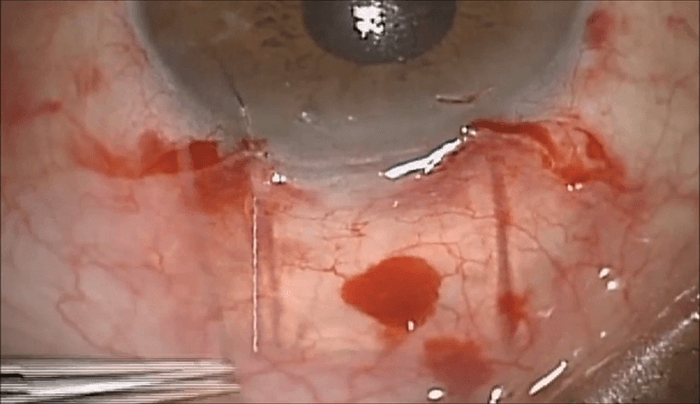
… and at the limitations
The single-arm nature of this study limited the ability to judge the outcomes in comparison to incisional procedures, but previous studies have suggested that CLASS is similar to trabeculectomy in terms of efficacy, and to manual non-penetrating deep sclerectomy in terms of safety (2). During the first year, the trial was prospective, but after the first year, treating surgeons were given latitude to use their own follow up protocols. This potentially introduced several confounding factors that might complicate analysis of the data. However, the IOP curves from each treatment center were almost identical at the end of five years, which appears to indicate a high degree of predictability and reproducibility. Although patients with treatment-naïve glaucoma (in terms of surgery) were studied in the trial, we do not believe that prior treatment should be a contraindication to performing CLASS. I believe CLASS is therefore a viable, effective and non-penetrating alternative to trabeculectomy in patients with glaucoma. Noa Geffen is an ophthalmologist at the Department of Ophthalmology, Meir Medical Center, Kfar Saba, and the Ein-Tal Eye Center, Tel Aviv, Israel.The Laser Quest for a Happy Medium A User’s Guide to SLT
References
- M. Mimouni, E. Assia, N. Geffen. Five years follow up of CO2 laser assisted sclerectomy surgery (CLASS) in open angle glaucoma patients – a multi-center study report. Presented at the 12th EGS Congress, Prague, Czech Republic, June 2016. G Greifner et al., “Results of a CO2 laser-assisted deep sclerectomy as compared with conventional deep sclerectomy”, J Glaucoma, 25, e630–e638 (2016). PMID: 25383470.
